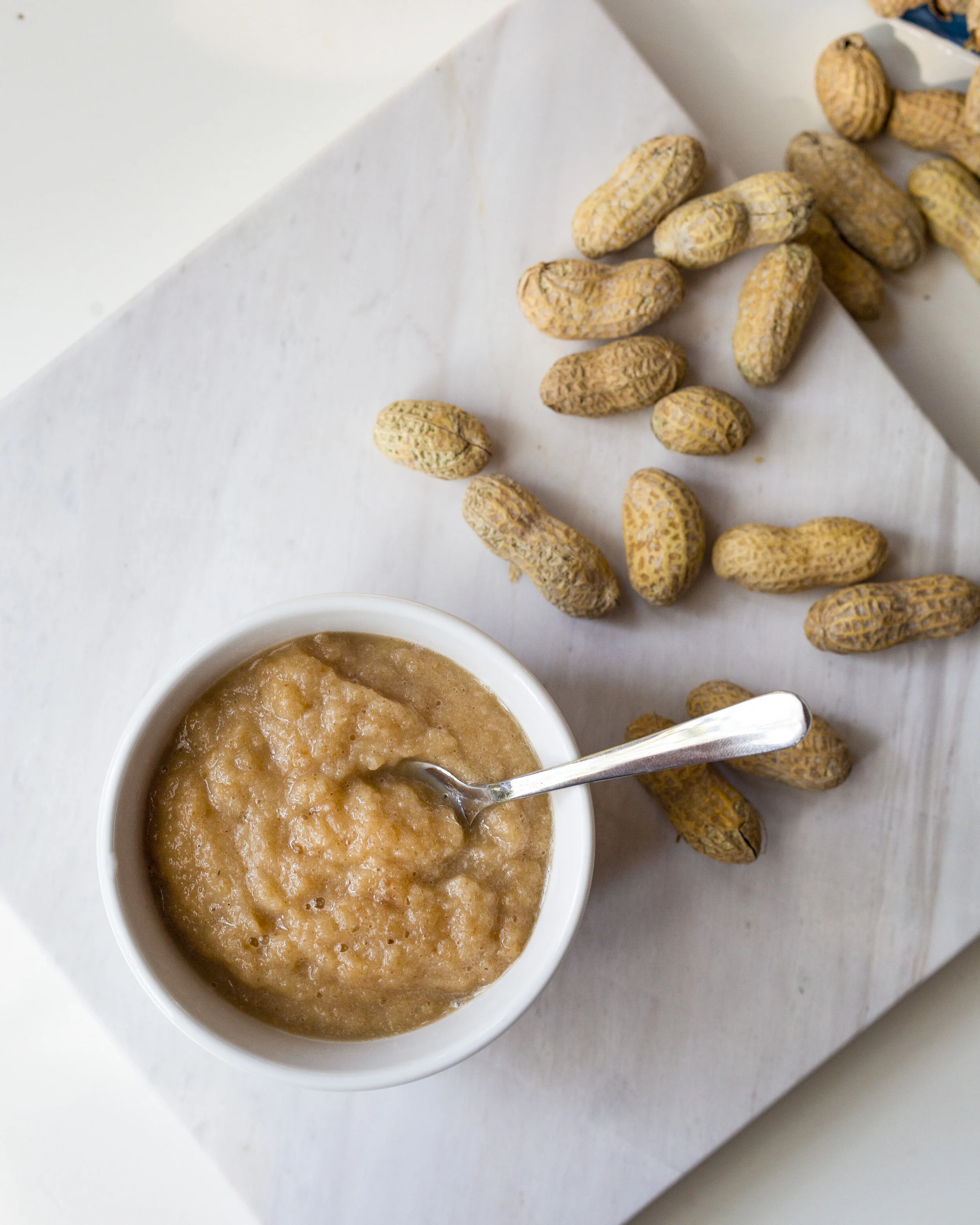Introducing Peanuts to Infants During A Pandemic
This post is a collaboration with The Peanut Board. I received compensation, but all opinions are my own.
When a baby is born, many parents think about what the baby will inherit from its parents. From a beautiful eye color to an ability to pick up a foreign language easily, genetics and family history can impact a child’s future. Unfortunately, kids can also inherit things we don’t want for them, like an increased risk of developing food allergy.
The good news is that caregivers may be able to reduce the risk of the baby’s development of allergy simply by introducing the child to peanut foods early and often. Doing so, particularly for those at high risk, may result in a peanut allergy-free life.
How to Reduce the Risk of Developing Peanut Allergy
Imagine no longer having to worry about a young child developing an allergy to peanuts. While there is no magic bullet to prevent peanut allergy in every child in the world, there is a simple step that caregivers can take to help significantly reduce the risk, and that is feeding the infant peanut foods early and often.
According to a 2008 study of children in Israel and those in the UK, those fed peanut products later in life have a 10-fold increase in peanut allergy prevalence when compared with those who eat peanut products early and often according to results from a study evaluating over 10,000 children (1). A landmark study known as the Learning Early About Peanut Allergy trial (LEAP trial) highlights how early exposure to peanuts is key when working with at-risk babies. In this trial, researchers randomly assigned 640 high-risk infants at peanut allergy risk to either consume or avoid peanuts until 60 months of age. Results suggest that early introduction of peanuts significantly decreased the frequency of the development of peanut allergy among children at high risk (those with severe eczema and/or egg allergy). Specifically, eating peanut foods early and regularly (2 grams three times per week) reduced the risk of peanut allergy by more than 80 percent, compared to peanut avoidance.
Furthermore, 2020 marks the first time that the USDA expert report — a report that provides guidance for creating the dietary guidelines — includes recommendations for infants and toddlers under 2 years of age, recognizing the importance of this foundational feeding time is for your baby’s long-term health. According to the report, strong evidence suggests that introducing peanut in the first year of life (starting after a baby turns 4 months old as developmentally ready) may reduce the risk of food allergy to peanuts. Additionally, the experts recognize that early peanut introduction may benefit all babies, regardless of their food allergy risk.
But caregivers shouldn’t simply hand a six-month-old a handful of peanuts and wish for the best. Offering the baby peanut foods that are developmentally appropriate, like peanut snack puffs and toast strips with a thin spread of creamy peanut butter, can be satisfying options. If your baby is enjoying purees, you can add peanut to puree recipes, such as applesauce or other fruits and vegetables, or to the one featured below.
Introducing Peanuts to At-Risk Infants During the Pandemic
Pre-pandemic, healthcare providers often had at-risk infants eat their first peanut foods in an office setting. But with the current precautions in place and families avoiding health care settings due to the current pandemic, the traditional route is no longer preferred by some.
Thankfully, a virtual option for early exposure to peanuts appears to be a viable “plan B”. I wrote about this option here.
Peanut-Apple-Banana-Cinnamon Baby Food Puree
Photo Credit - Jackie Stofsick
Feeding your baby peanut foods is simple to do, especially when making homemade baby food puree.
In this recipe, creamy peanut butter is added to fruits to give baby his first bites of peanut with the added bonus of plant-based proteins and healthy fats. The addition of cinnamon treats baby to a surprising flavor that isn’t always found in the baby food aisle.
Ingredients:
· 1 large apple, cubed and peeled (choose sweeter variety like fuji or honey crisp)
· 1 ripe banana, peeled
· 1/2 Tablespoon natural creamy peanut butter
· 1/2 teaspoon ground cinnamon
· 1 Tablespoon breast milk or formula (optional-depending on desired consistency)
Instructions:
1. Boil water and place steam basket on top.
2. Place the apple in the steam basket and steam for two minutes, or until tender.
3. Combine apple and banana with peanut butter and cinnamon in a blender.
4. Cover blender and blend until desired consistency is reached. If thinner puree desired, add breast milk or prepared formula –1 tablespoon at a time.
5. Serve and enjoy!

